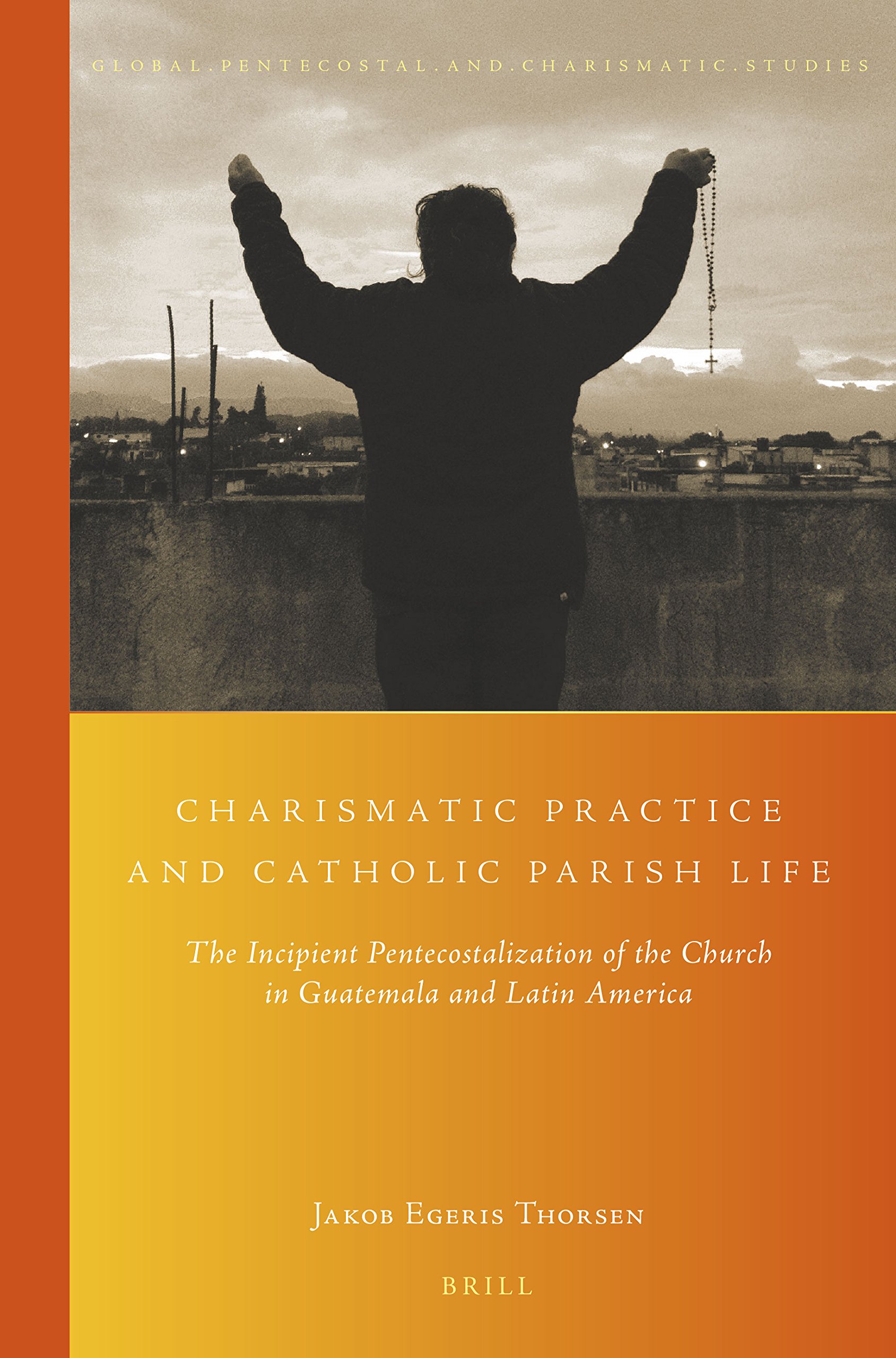Jakob Thorsen: Charismatic Practice and Catholic Parish Life
 Jakob Egeris Thorsen, Charismatic Practice and Catholic Parish Life: The Incipient Pentecostalization of the Church in Guatemala and Latin America, Global Pentecostal and Charismatic Studies 17 (Leiden: Brill, 2015) x + 242 pages, ISBN 9789004291669.
Jakob Egeris Thorsen, Charismatic Practice and Catholic Parish Life: The Incipient Pentecostalization of the Church in Guatemala and Latin America, Global Pentecostal and Charismatic Studies 17 (Leiden: Brill, 2015) x + 242 pages, ISBN 9789004291669.
Recent scholarship on the rapid expansion of Christianity in the Global South consistently affirms the Pentecostalization of the church. Scholars are producing histories and theologies on the efforts of Pentecostal missionaries from the Global North and the rise of independent Pentecostal churches (hence the series at hand). In this work, Jakob Egeris Thorsen gives a much-needed history and analysis of another dimension of Global South Pentecostalization, namely the role of Charismatic experience and praxis within Catholic parish life.
In this revision of his PhD dissertation defended at Aarhus University in Denmark, Thorsen delivers a Missionwissenschaft, a methodological blend between science of religion and mission theology, to assess the rise of the Catholic Charismatic Renewal (CCR) in Latin America and specifically Guatemala. Thorsen argues that the rapid Pentecostalization of the Catholic Church created increased blurring between CCR and the institutional Church. He discovers renewalists who reject institutional religion for more particularistic and countercultural praxis and witness, but paradoxically remain in the tradition and embrace institutional hierarchy.
Thorsen focuses on the religious life of Charismatic and non-Charismatic Catholics in La Colonia, a small parish in the lower middle-class district of Santísima Trinidad on the outskirts of Guatemala City. He conducted six months of fieldwork in this small Guatemalan Charismatic Catholic parish (from June to December 2009) in order to assess the ecclesial contributions of Guatemalan Charismatics, particularly their negotiation of parish life alongside priests, bishops, non-Charismatics, and non-Catholic Pentecostals. Apart from routine participation in weekly parish events, Thorsen concentrated his research on three Charismatic groups, namely, a full-scale Charismatic youth group, a soft-Charismatic Bible study, and an upper middle-class non-parish based Charismatic youth group. He conducted more than thirty interviews of parish members including Charismatic and non-Charismatic parishioners as well as four priests and two Charismatic auxiliary bishops. Along the way, Thorsen reveals his personal connection and possible motivation for this project; he first came to Guatemala as a sixteen-year-old high school exchange student and subsequently converted to Catholicism in his early twenties. Thorsen’s wife is from this community, and their daughter was baptized in this parish. He describes himself as a non-Charismatic lay theologian and a friendly critic of the CCR.
Recent scholarship on the rapid expansion of Christianity in the Global South consistently affirms the Pentecostalization of the church.
Category: In Depth, Summer 2018


